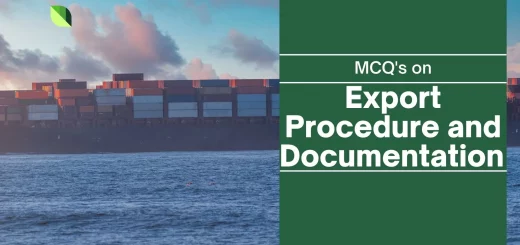Accounting of Transactions of Foreign Currency MCQ | (Free Resource)
11. Following is not an example of a monetary item.
(a) Cash
(b) Receivables
(c) Payables
(d) Fixed assets
12. Following is an example of a non-monetary item.
(a) Debtors
(b) Creditors
(c) Bank account
(d) Inventories
13. At each balance sheet date, non-monetary items, which are carried at fair value or other similar valuation denominated in a foreign currency, should be reported
(a) using the exchange rate at the date of the transaction
(b) using the exchange rates that existed when the values were determined
(c) using the closing exchange rate at the date of the balance sheet
(d) using the average exchange rate during the financial year
14. At each balance sheet date, Foreign currency monetary items should be reported
(a) using the exchange rate at the date of the transaction
(b) using the average of the (i) exchange rate at the date of the transaction and (ii) closing exchange rate
(c) using the closing exchange rate at the date of the balance sheet
(d) using the lowest exchange rate during the financial year
15. Following Exchange differences should be recognized as income or as expenses in the period in which they arise –
(a) Exchange difference arising on the settlement of monetary items
(b) Exchange difference arising on reporting an enterprise’s monetary items at rates different from those at which they were initially recorded during the period
(c) Exchange difference arising on reporting an enterprise’s monetary items at rates different from those at which they were reported in previous financial statements
(d) all the above
16. Following Balances should be translated at the closing rate
(a) Non-monetary items valued at historical cost denominated in a foreign currency
(b) Monetary items
(c) Non-monetary items which are carried in terms of fair value, denominated in a foreign currency
(d) All the above
17. Following Balances should be translated at the exchange rate on the date of the original transaction
(a) Non-monetary items valued at historical cost denominated in a foreign currency
(b) Monetary items
(c) Non-monetary items which are carried in terms of fair value, denominated in a foreign currency
(d) All the above
18. Following Balances should be translated at the exchange rate that existed when the values were determined
(a) Non-monetary items valued at historical cost denominated in a foreign currency
(b) Monetary items
(c) Non-monetary items which are carried in terms of fair value, denominated in a foreign currency
(d) None of the above
19. No exchange difference will arise on
(a) inventory, fixed assets, investments etc. valued at historical cost denominated in a foreign currency
(b) cash, debtors or creditors
(c) inventory, fixed assets, investments etc. which are carried in terms of fair value, denominated in a foreign currency
(d) (a) and (c) above
20. The mean of the exchange rates in force during a period is known as
(a) Average Rate
(b) Closing Rate
(c) Reporting Rate
(d) Fair Rate
| Answers: 11)Fixed assets 12)Inventories 13)using the exchange rates that existed when the values were determined 14)using the closing exchange rate at the date of the balance sheet 15)all the above 16)Monetary items 17)Non-monetary items valued at historical cost denominated in a foreign currency 18)Non-monetary items which are carried in terms of fair value, denominated in a foreign currency 19)(a) and (c) above 20)Average Rate |


